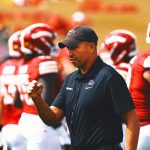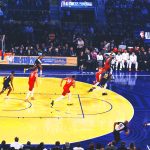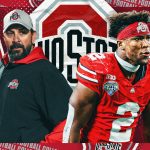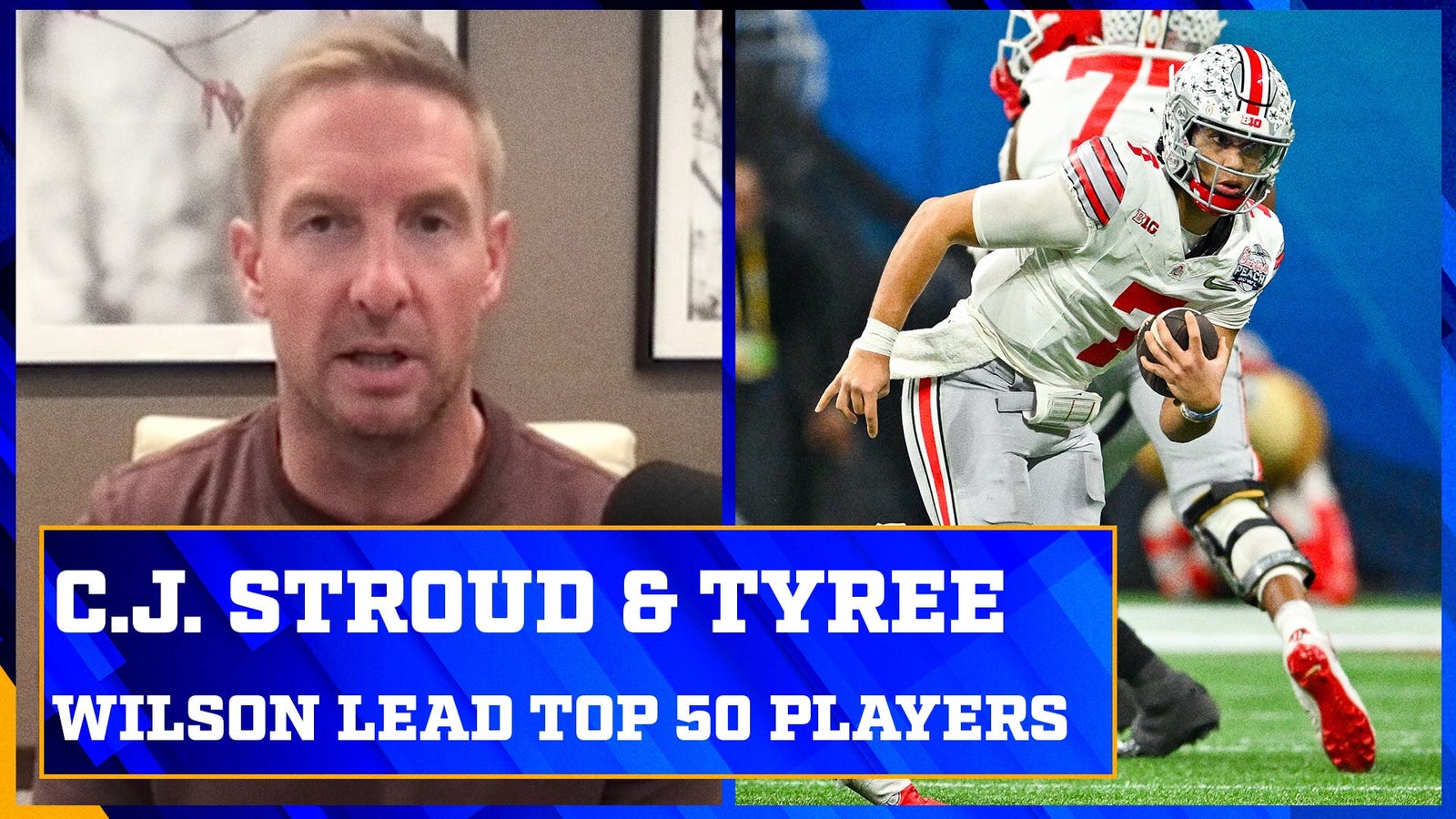Last year’s safety class was arguably the best of the decade, with four safeties selected in the draft’s first round — the most since an equal number were among the top 32 picks back in 2014.
This year’s class, on the other hand, might only have one player selected in the first round and, due to his slim frame, some scouts even see him as a better fit at cornerback.
Make no mistake, this year’s safety class offers some future starters —and plenty of intriguing storylines — but expect most of the names on this list coming off the board on Day Two and Three.
[Prior positional rankings and scouting reports: QB, RB, WR, CB, EDGE, DT, G/C, OT]
1. Brian Branch, Alabama, 6-0, 190, Junior
Overview: Excelling in the same “Star” role as former Alabama and current Pittsburgh Steelers standout Minkah Fitzpatrick, Branch developed into arguably the most versatile and dependable defensive back in the country over the past three years, topping out this past season with 90 tackles, including 14 for loss, while tying a career high with nine pass breakups and delivering big plays as both an interceptor and punt returner, earning All-American honors.
Even amidst all of the talent in Tuscaloosa, Branch stood out immediately, logging action in 12 games as a true freshman and starting three, collecting 27 tackles, breaking up nine passes and picking off two passes.
ADVERTISEMENT
Strengths: Branch is a no-nonsense, do-it-all safety who processes and plays faster than his relatively pedestrian workout numbers might suggest. He offers a strike zone Cy Young pitchers would envy, ranking as arguably the cleanest one-on-one tackler in this class, regardless of position. Tracks the ball like it’s on radar, taking sharp angles in pursuit and delivering forceful, immediate stops as a tackler. This awareness also shows up in coverage with Branch typically asked to drop down and cover slot receivers, forcing opponents to throw elsewhere because of his tracking skills.
Impressive timing, hand-eye coordination and body control to slip his arm through those of receivers’ to rake at the ball as it arrives, breaking up 27 passes in just three years at Alabama. Impressive vision and natural elusiveness with the ball in his hands, returning the first of two punts he received in 2022 back for a 68-yard touchdown (Louisiana-Monroe). He was revered at Alabama for his leadership and grit.
Concerns: Branch lacks an ideal frame for the rigors of the safety position, prompting a possible switch to cornerback in the NFL, where he would rank among the position’s lesser athletes. He has merely average straight-line speed for an NFL defensive back, clocking in at 4.58 seconds. His agility numbers (4.56 second short shuttle) at his Pro Day were among the slowest of this year’s class of DBs, proving that he’s stickier changing directions than most want at cornerback. Branch can get pretty grabby in coverage, getting called five times for pass interference in 2022.
Bottom Line: Branch is aptly named, as he is slimmer than scouts would prefer but the tape shows a pro-ready prospect whose instincts, reliable open-field tackling and knack for producing big plays makes him the easy top prospect from this class.
Grade: First round
2. Antonio Johnson, Texas A&M, 6-2, 198, Junior
Overview: Johnson signed with Texas A&M as a celebrated four-star recruit out of St. Louis, initially committing to Tennessee before flipping to the Aggies, for whom he logged action in seven games as a true freshman, even starting once, and recording 14 tackles overall. Johnson emerged as a fulltime starter and enforcer as a sophomore, finishing second on the team in total tackles (79) and tied for third with 8.5 of them for loss. Despite missing three games in 2022 due to undisclosed injuries, Johnson posted similar numbers in 2022, leading the Aggies in tackles per game (7.9). Despite never earning all-conference honors during his career, Johnson opted to forgo his remaining eligibility and enter the 2023 draft.
Strengths: Johnson has above-average size for the position, with the frame to add more mass without a significant loss of quickness. He checks boxes with his comfort in the box, attacking lanes in run support with the ferocity of a linebacker. He’s a physical hitter with a knack for producing forced fumbles (three in 2022). Has some wrinkles to iron out in coverage, but possesses the speed and agility to handle this role and enters the NFL with experience deep and covering the slot. He’s a regular on special teams and plays with the intensity to continue in this role.
Concerns: Johnson is currently more impressive in run support than in coverage, showing just average awareness of the ball in flight. Recorded just one pass breakup in 2022 (and eight over his career, including just one interception), showing a frustrating focus on the man, rather than the ball. He can get a little over-zealous with his pursuit angles and needs to do a better job of settling and wrapping securely.
Bottom Line: Johnson looks and plays the role of a classic “box” safety well. Like most big safeties, he will always struggle a bit with the quick-twitch slot receivers of the world, but Johnson can handle tight ends and backs in coverage and can immediately improve a team’s grit and physicality in run support and on special teams.
Grade: Second-to-third round
3. JL Skinner, Boise State, 6-4, 209, Redshirt Senior
Overview: A three-star recruit out of San Diego who excelled at wide receiver and cornerback during his prep career, Skinner turned down offers from notable Power 5 programs to play safety on Boise State’s blue turf, modeling his game after longtime Seattle Seahawks star Kam Chancellor.
Despite the switch to a position he’d never played before, Skinner proved a quick learner, playing in all 14 games as a true freshman and even cracking the starting lineup — where he’d remain all four years of his time in Boise. Skinner filled the stat sheet with the Broncos, collecting 208 tackles, including 9.5 for loss and 20 pass breakups, turning seven of those interceptions, earning All-Mountain West honors the past two years, as well as an invitation to the Senior Bowl, where he was named the North Team’s Practice Player of the Week among safeties.
Strengths: Skinner offers rare size (and even better size potential) for the position with an imposing frame, including 32″ arms. He’s more agile than his lanky frame suggests, showing surprising agility and acceleration for such a big man. Graceful athlete, showing impressive range to handle deep coverage duties and is not strictly the “box” safety his frame and highlight reel of big hits suggest. Speaking of those big hits, Skinner can certainly play big when he wants to, generating real force with his collisions by dropping his shoulder into ballcarriers, offering some intimidation factor from the secondary. His experience at receiver is clear, with Skinner showing good concentration, body control and soft hands to pluck outside of his frame… Interception totals rose each year at Boise…
Concerns: Skinner isn’t a fit for everyone, with a high-cut frame and spindly lower body that raises all sorts of concerns about his ability to keep up with quick-twitch receivers of today’s NFL. He enters the draft with some questions still left unanswered after undergoing surgery for a torn pectoral muscle prior to the draft and never completing any of the normal workouts — including running or jumping — teams want prospects to do. He’s too reliant on his big hits to knock ball carriers to the ground, failing to consistently wrap.
Bottom Line: Skinner is a bit unusual in that his frame and highlight reel suggest that he’s one type of player but the tape shows a more well-rounded prospect with more interchangeable value than one might think. The late surgery and recovery complicates Skinner’s grade slightly and could have him available later than his play warrants.
Grade: Second-to-third round
4. Jartavius “Quan” Martin, Illinois, 5-11, 194, Redshirt Senior
Overview: It may have taken until the 2023 NFL Scouting Combine for Martin to get his due but once there, the five-year starter stole back the spotlight that had centered on his All-American teammates Devon Witherspoon and Sydney Brown, delivering one of the most impressive workouts in Indianapolis and reminding scouts that he was the back line to the stingiest defense in college football last season.
Growing up in football-rich Florida, Martin nearly fell through the recruiting cracks before former Illinois head coach Lovie Smith saw enough to offer the three-star recruit an opportunity. Martin rewarded Smith’s investment, earning a starting job as a true freshman at cornerback and collecting three interceptions in 2018. He bounced around between cornerback, safety and nickel over his time in Champagne, topping out in 2022 with career-highs in tackles (64), passes broken up (14) and interceptions (three).
Strengths: Martin is a twitchy athlete who starred in Indianapolis, recording the highest vertical jump (44″) of anyone tested this year, as well as the longest broad jump (11’1″) and swiftest 10-yard split (1.44 seconds) of any of the safeties tested with an above-average 4.46 time in the 40-yard dash and 15 bench press repetitions, as well. He complements his impressive pure athleticism with impressive key and diagnosis skills. Martin also tracks the ball well, showing confidence and body control to contort in space and make a play on the ball. He leads the safety class with 30 career PBUs, with 22 of them coming in the past two seasons while he’s handled slot and single-high duties. He’s also a steady, reliable tackler.
Concerns: Martin isn’t quite the sum of his parts. He has minimal body armor for the position, possessing a relatively slight frame and is more of a sweeper than a stopper as a tackler, getting the job done but lacking the intimidation factor as a hitter some want at safety. He has impressive ball production but there are some drops on tape. Will be viewed by some as a better fit at nickel cornerback than as a true safety.
Bottom Line: Martin is an intriguing prospect in that he is both battle-tested (55 game appearances) and yet still viewed as a prospect with some untapped potential due to his extraordinary raw athleticism and the fact that he was moved around as much as he was at Illinois. This versatility should land Martin a selection within the top 100 and a relatively quick path towards meaning playing time in the NFL.
Grade: Second-to-third round
5. Jammie Robinson, Florida State, 5-11, 191, Redshirt Junior
Overview: Below-average size and speed left Robinson as “just” a three-star recruit according to online scouts, but colleges viewed him as top talent with Alabama, Georgia and Notre Dame among the programs offering Robinson full-rides following a stellar prep career in the Peach State. He wound up signing with South Carolina — earning Freshman All-SEC honors in 2019 with 62 tackles, five passes broken up and an interception — and appeared well on his way towards becoming the next star defensive back for the Gamecocks until the program opted to replace Will Muschamp as head coach, leading to Robinson transferring to Florida State for the final two years of his college career.
Like at South Carolina, Robinson immediately excelled, leading the Seminoles in tackles over both the 2021 and 2022 campaigns and becoming the first player at FSU to earn back-to-back First Team All-ACC honors since cornerback Jalen Ramsey.
Strengths: Robinson is a highly instinctive safety who trusts his eyes and plays faster and more physically than his workouts suggest. He shows zero hesitation in throwing his body around in run support, unselfishly taking out blockers, if necessary, and showing impressive body control and radar to slip his way through traffic on the way to the ballcarrier. He packs more punch as a hitter than his size suggests (three career forced fumbles) and delivers clean, wrap-up tackles. Experience and ballskills show up in coverage, where Robinson looks comfortable with the ball in flight, batting away 23 passes over his career with seven interceptions. It looks like he should have durability concerns, but he played in every game of his college career.
Concerns: Robinson is small and slow. He’s significantly undersized for safety, with his frame seemingly better suited to nickel cornerback. Possesses just average straight-line speed for the position, as well, clocking in at just 4.59 seconds and raising all sorts of concerns about his ability to carry receivers deep.
Bottom Line: Robinson may lack ideal tools, but his game is more than the sum of his parts. He may very well wind up lasting longer than my ranking suggests but in three years when Robinson is starting in the NFL and some of the more gifted prospects on this list are still making rookie mistakes, his value will be more apparent.
Grade: Third round
6. Ji’Ayir Brown, Penn State, 5-11, 203, Redshirt Senior
Overview: It almost seems like a case of déjà vu at Penn State with Brown, who, just like last year’s stellar safety prospect Jaquan Brisker, previously starred at Lackawanna Junior College and plays with a similar heat-seeking missile mentality. Scouts can only hope that Brown will provide a similar impact in the NFL as Brisker, who starred in Chicago after being selected 48th overall.
Brown’s ballhawking ways have some envisioning he could match his former teammate’s impact, and then some. Dating back to his two years at Lackawanna, Brown picked off a staggering 18 passes over his college career, including 10 at Penn State over the past two seasons. To put that into perspective, only two other safeties invited to the combine this year (California’s Daniel Scott, Notre Dame’s Brandon Joseph) had as many as 10 career interceptions.
Strengths: Plays with a frenzied, attacking style that leads to big plays, whether it come via his aggressive downhill attacks in run support or in coverage, where Brown shows rare finishing skills as a receiver, turning 10 of his 18 pass disruptions while starting at Penn State the past two years into interceptions. He is characterized as ultra-competitive. A standout on special teams. Started every game the past two years and played in every game while at Penn State with no known injury concerns.
Concerns: There’s too much Tasmanian Devil to his tackling style, launching himself rather than breaking down, driving his hips and wrapping securely, leading to some ugly broken tackles and even some flat whiffs. He was charged with six missed tackles by Pro Football Focus and there are more than that on tape. He showed pretty ho-hum speed (4.65 in the 40-yard dash) and explosiveness (32.5″ vertical) at the Combine, though to his credit, he improved both results at his Pro Day (4.58, 35.5″) three weeks later. Received zero offers out of high school in part due to low test scores and grades.
Bottom Line: I am as intrigued by all of the big plays as anyone, but just like how leaky pass protection can leave a talented running back on the sideline, sloppy tackling can put a rookie safety in the coaches’ dog house pretty quickly. Brown is one of the few safeties in this class, however, who flashes starter-level potential and I expect him to be selected as such, with a Top 100 selection likely.
Grade: Third round
7. Jordan Battle, Alabama, 6-1, 209, Senior
Overview: Battle is a four-year starter at Alabama who signed with the Tide following a brilliant prep career at powerhouse St. Thomas Aquinas in Fort Lauderdale. Starting in Nick Saban’s secondary is a virtual pipeline to the NFL and Battle accomplished that as a true freshman, ultimately leaving Tuscaloosa as a two-time All-American with a terrific track record of turning interceptions into touchdowns.
Strengths: Passes the eye test with a prototypical frame and impressive overall musculature. Savviness and experience show up with his quick diagnosis of the action and subtle slip and stuffs of would-be blockers, showing multiple ways to get to the ball. He’s not a cover corner, but given his size, Battle is surprisingly clean in coverage, showing smooth change of direction and acceleration for man, as well as good awareness for zone. He’s a generally reliable open-field tackler who can deliver a pop. Battle has shown a flair for the dramatic with the ball in his hands, turning three of his six career interceptions into 40-plus-yard touchdowns (Georgia-2021 Mississippi State-2021, Kentucky-2020). Played in all 54 games of his college career. Voted a team captain in 2022.
Concerns: Jack of all trades, master of none. Battle lacks the punishing physicality his size and Alabama’s reputation might suggest, as well as ideal range for single-high-safety looks. Confirmed the relatively average speed shown on tape at the combine with a 4.55 second time in the 40-yard dash, one that Battle notably didn’t try to improve upon at his Pro Day. Scoring TDs on half of them helps hide the fact that Battle only registered 16 PBUs and six interceptions over 54 career games.
Bottom Line: Battle isn’t the swiftest safety in this class but he’s a virtual coach on the field given his experience, offering plug and play help at either safety role or nickel cornerback, as well as the ideal frame and mentality for special teams.
Grade: Third round
8. Daniel Scott, California, 6-1, 208, Redshirt Senior
Overview: Under the direction of head coach Justin Wilcox, Cal has quietly emerged as a steady source of quality defenders in recent years, with Scott expected to be the ninth consecutive member of the Golden Bears to be selected from that side of the ball. After excelling on the gridiron, basketball court and surfboard as a prep out of Pasadena, Scott signed with Cal as a three-star recruit. He did not see the field much until 2020, when Cal played just four games due to the pandemic. Once on the field, however, Scott broke out, leading Cal with three interceptions each of the past two seasons and turning heads at both the Senior Bowl and Combine.
Strengths: Looks the part of an NFL safety with thick, well-developed musculature. Starred at the combine, showing off arguably the most tantalizing combination of size and athleticism of the safety class. His 6.75-second 3-cone and 4.22 second short-shuttle times led the group and are more in line with cornerbacks’ and receivers’ results, as Scott was among the position groups’ best in terms of speed (4.45 in the 40-yard dash) and explosiveness (39.5″ vertical jump). He is far from just a workout warrior, showing quality diagnosis skills, toughness in run support and a knack for stepping up when the lights are brightest, delivering a forced fumble and interception to spark a dramatic comeback win over rival Stanford. Further, he’s a proven and dedicated special-teams performer and a 2022 team captain.
Concerns: Scott is a little raw and is already a relatively old prospect (24). I saw too many missed tackles on tape. Inconsistent pursuit angles. Gets too far over his skis (or is it surfboard?), over-pursuing and struggling to recover. Short arms (30 ¼) for his size and bounces off too many ballcarriers. Scott gets pinballed by tight ends more than expected for a safety of his size, as well. He isn’t as fluid in coverage as his shuttle drills suggest, reacting rather than anticipating too often with some wasted movement.
Bottom Line: After his starring performances at the Senior Bowl and combine, it is worth wondering how much more hype Scott might have had he starred at Clemson or Oklahoma rather than the minimal national exposure Cal and many other west coast teams receive. Sure, Scott is slightly older and the missed tackles are spooky, but I see a classic late-bloomer.
Grade: Third-to-fourth round
9. Sydney Brown, Illinois, 5-10, 211, Redshirt Senior
Overview: Brown was one of several breakout stars for the Illini this past season, more than doubling his previous career total with six interceptions in 2022 (all in the final six regular season games of the year), leading the Big Ten and earning him All-American honors. While Brown certainly deserves the applause, All-American accolades are a little ironic in this case as he is a native Canadian, as, of course, is his twin brother, Chase, one of my favorite running back prospects in this class.
The Browns grew up in Ontario but played their final two years of high school ball in Florida, prior to Sydney — the youngest by two minutes — signing with Illinois, with Chase playing his first year of college ball at Western Michigan before transferring to the Illini. Both became stars at Illinois, setting themselves up to become the first twins drafted into the NFL since fellow Big Ten players Carlos and Khalil Davis, formerly Nebraska defensive linemen, were selected by Tampa Bay and Pittsburgh, respectively, in 2020.
Strengths: Brown is built like a Sherman tank. He has a thick, sculpted frame that speaks to time spent in the weight room. The explosiveness seemingly evident in his physique showed up in the measured drills at the Combine, as well as on the tape. Turned heads with a 4.47-second time in the 40-yard dash, as well as a 40.5″ vertical jump and 10’10 broad jump, all ranking among the best of this positional group. He bounces around like a cannon ball in run support, delivering powerful pops that can knock ballcarriers to the ground on impact, alone. He forced four fumbles over his career.
Concerns: Brown is better in closer quarters than he is in space. Tightly wound and struggles to change direction fluidly, with shifty receivers twisting him up and leaving him in the dust. He had plenty of opportunities to make big plays in part because opponents thought they could beat him. He doesn’t always wrap as securely as you’d like with too many missed tackles on tape.
Bottom Line: The shipping company FedEx may have popularized the saying, “Brown delivers,” but this young man personifies it, starting a staggering 50 games over his career. It’s that kind of grit that might help him carve out a meaningful role early on.
Grade: Fourth round
10. Marte Mapu, Sacramento State, 6-3, 217, Redshirt Senior
Overview: Playing multiple roles for a high-school team with a losing record, Mapu did not generate much interest from recruiters and felt fortunate when he received an offer to play safety from Sacramento State. After not seeing the field much early on, Mapu emerged as a star at “rover” (a safety-linebacker hybrid) in 2021, earning Second Team All-Big Sky honors with 14 pass breakups, including four interceptions.
Opting to return for a sixth season, Mapu was even better closer to the line of scrimmage in 2022, earning the conference’s Defensive Player of the Year with a career-high 76 tackles, including 6.5 for loss, as well as another two interceptions and a blocked kick. He turned heads at the NFLPA Collegiate Bowl, earning a late call-up to the Senior Bowl, where he flashed before pulling a muscle stain cut his audition short.
Strengths: Mapu has an imposing frame with broad shoulders and a v-shaped torso, including a well-built musculature and long arms (33 ½”). He isn’t so rocked up that he can’t move, however, showing a relatively low, tight backpedal for his height, as well as loose enough hips to turn and run. He complements his athleticism with awareness and quick reaction. He shows exciting explosiveness as a tackler with some bone-rattling hits on tape. Wasn’t featured as a rusher but shows burst and bend to intrigue on possible blitzes.
Concerns: Mapu will be viewed by some as a ‘tweener or possible outside linebacker convert, which is where he practiced at least part of the time at the Senior Bowl. He has the agility to track tight ends and backs in coverage but this isn’t the guy you’d want shadowing quick receivers in man coverage. Already a fairly old prospect (23) and is still facing recovery time following surgery in February to repair a torn right pectoral, which kept him from participating at the combine or in any Pro Day workouts prior to the draft.
Bottom Line: The relatively shallow crop of safeties from Power 5 schools this year could have scouts looking at deeper waters for sleepers with Mapu one of my favorites of the class, regardless of position. If NFL teams received positive news regarding his recovery from surgery, I expect Mapu to come off the board early on Day 3, at the latest, likely making him among the first players selected this year who was not invited to the combine.
Grade: Fourth-to-fifth round
Rob Rang is an NFL Draft analyst for FOX Sports. He has been covering the NFL Draft for more than 20 years, with work at FOX, Sports Illustrated, CBSSports.com, USA Today, Yahoo, NFL.com and NFLDraftScout.com, among others. He also works as a scout with the BC Lions of the Canadian Football League. Follow him on Twitter @RobRang.
NFL Draft coverage from FOX Sports:
NFL trending
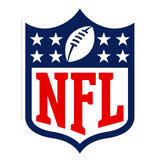
Get more from National Football League Follow your favorites to get information about games, news and more

